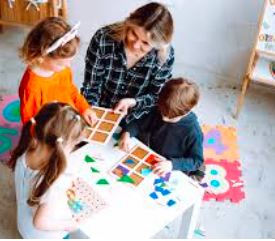Preschool is a time of incredible growth, not just academically, but socially and emotionally as well. For children who are learning two languages at once—often called dual language learners (DLLs)—this stage is especially unique. These young learners bring rich cultural and linguistic experiences that can be nurtured in the right environment. With thoughtful support, they can thrive both in language development and overall learning.
Understanding Dual Language Learners
Dual language learners are children who are learning their home language alongside a second language, commonly the primary language used in the preschool setting. These children may speak a language other than English at home and are exposed to English in the classroom. Every DLL’s journey is different depending on their exposure, confidence, and individual learning pace.
Creating a Language-Rich Environment
Preschool classrooms that support language growth benefit all children, but especially DLLs. Teachers can incorporate songs, storytelling, picture books, and visuals to help make meaning clear and engaging. Using gestures, facial expressions, and visual cues also supports understanding and communication for those still developing their vocabulary in a new language.
Valuing the Home Language
Children feel more confident and comfortable when their home language is recognized and respected. Simple steps—like greeting them in their home language, labeling classroom items in both languages, or inviting families to share stories and traditions—can strengthen the connection between home and school. This approach affirms the child’s identity and fosters trust.
Partnering with Families
Families of DLLs are a powerful resource. Encouraging them to continue using their home language at home supports language development and strengthens family bonds. Schools can build bridges by offering translated materials, hosting family events, and inviting parents to participate in classroom activities. Open communication helps families feel valued and involved in their child’s education.
Building Social Connections
Language is closely tied to social interaction. Helping DLLs build friendships and engage with peers is essential. Teachers can promote inclusive play by modeling simple phrases, pairing children for cooperative tasks, and encouraging peer-to-peer support. A warm, welcoming atmosphere gives DLLs the confidence to take language risks and grow socially.
Professional Development for Educators
Educators who work with dual language learners benefit from training that builds cultural awareness and provides strategies for effective communication. Learning how to scaffold language, adapt instruction, and observe progress ensures that each child’s needs are met with care and intention.
Celebrating Progress, Not Perfection
Language learning is a process that takes time. DLLs may take longer to speak confidently in the new language, and that’s perfectly okay. Teachers and caregivers can celebrate small milestones, encourage effort, and create safe spaces for children to express themselves in any language.
Conclusion
Supporting dual language learners in preschool means creating a nurturing space where every child feels heard, respected, and empowered to learn. When educators, families, and communities work together, DLLs not only build strong language skills—they develop confidence, curiosity, and a lifelong love of learning.


